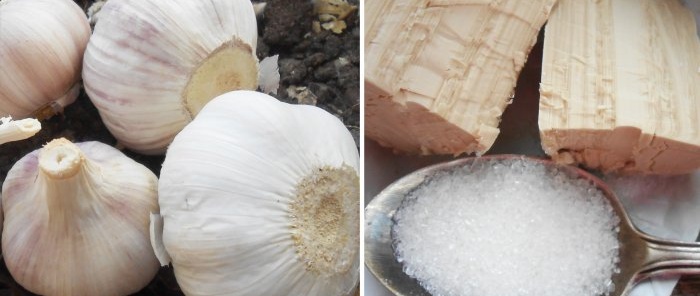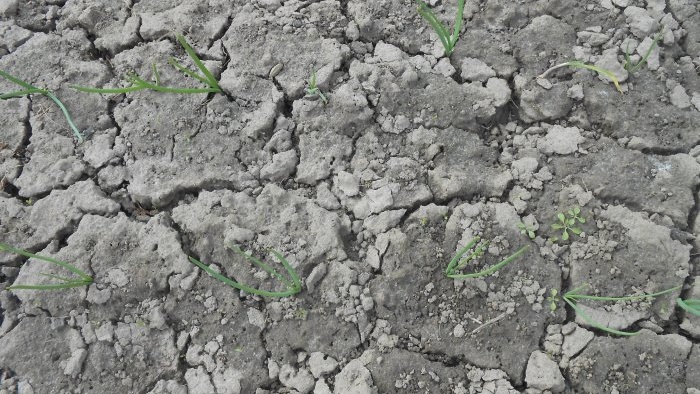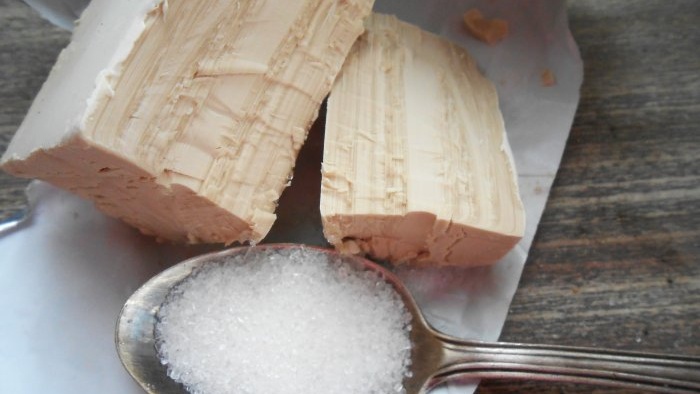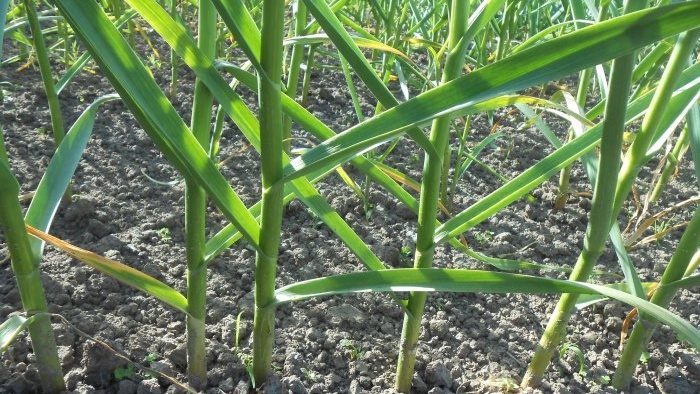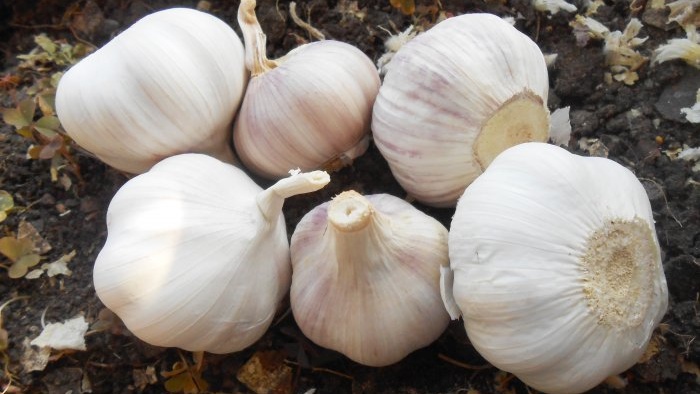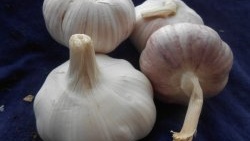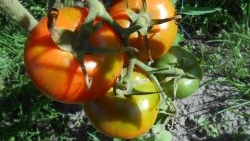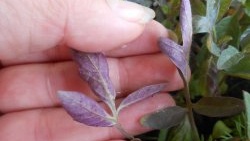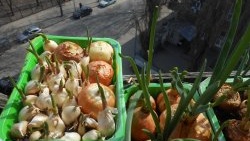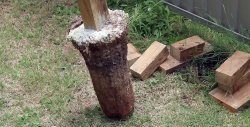In cold spring, when the daily temperature does not exceed 12°C throughout April, the first feeding of winter and spring garlic is carried out in May. Since at the beginning of the growing season it is very important to provide the plants with the components necessary for the development of powerful leaf blades, nitrogen fertilizers (organic or mineral) are applied to onion vegetables (garlic and onions).
Nitrogen is known to be responsible for the development of leaf apparatus in plants. It is in the leaves of garlic that a sufficient amount of plastic substances accumulates, which are subsequently consumed by the bushes to form a large and juicy head.
Nitrogen starvation is always manifested by yellowing of the lower leaves and tips of feathers. This picture is often observed in the spring by inexperienced gardeners who consider applying fertilizers to spicy vegetables as an optional step. But it is precisely in conditions of nitrogen deficiency that garlic bushes quickly age, without having time to fully develop the underground part and form large bulbs.
Time-tested mineral fertilizers for garlic
The simplest option for spring feeding of garlic is a nutrient solution of time-tested monofertilizers: urea (1 tablespoon per bucket of water) or ammonium nitrate (2 tablespoons per bucket of water).
Complex water-soluble fertilizers with a sufficient amount of nitrogen (Azofoska, Plantafol, Partner, OMU with NPK 16*16*16) have also proven themselves to be excellent. They are dissolved in water according to the manufacturer's recommendations.
A solution of ammonia and citric acid for root feeding of garlic and onions
To save money, many summer residents use ammonia (10% ammonia aqueous solution) to fertilize garden plants, including onions and garlic. Fertilizing with ammonia not only provides garlic bushes with nitrogen, but also repels numerous pests of onion crops, masking the smell of seedlings from onion flies and other parasites for several days. Also, liquid fertilizer partially disinfects the soil, preventing the spread of phytopathogens.
A pharmaceutical clear liquid with a pungent and pungent odor is diluted in water (without chlorine) at the rate of 2 tbsp. l. for 10 liters of water. And to neutralize alkali and increase efficiency, citric acid crystals must be added to the ammonia solution (1 teaspoon per bucket of fertilizer).
The resulting fertilizer is poured into a watering can with a nozzle. It is applied directly over the leaves of onions or garlic by sprinkling at the rate of 4-5 liters of nutrient solution for each square meter of planting. It is recommended to use liquid fertilizer with ammonia on wet soil, either after rain or after scheduled watering of the beds.
After the event, experts advise be sure to loosen the plantings, especially on heavy soils.
By quickly walking over the surface of the beds with a hoe, you will prevent the formation of an airtight soil crust and activate the flow of oxygen to the roots, while simultaneously removing hatched weeds. Under such conditions, plants will be able to absorb nitrogen and other nutrients in full.
Yeast feeding of garlic in late spring
1-2 weeks after adding nitrogen products, experienced gardeners must fertilize the garlic plantings once with mash. The yeast solution is prepared in a few hours and costs a penny, and the benefits of adding it under garlic are very, very significant. Sourdough made from dry baker's yeast and sugar contains numerous single-celled fungi that activate the development of beneficial soil microflora and earthworms.
Thanks to the vital activity of valuable microorganisms that feed on organic products present in the soil, previously applied fertilizers are quickly broken down into forms that are bioavailable to the root system of garlic seedlings.
Mash recipe
In a three-liter jar of warm water (do not pour the liquid to the top), dissolve a tablespoon of dry yeast and two tablespoons of granulated sugar. Instead of dry yeast, you can use pressed yeast at the rate of 100 g per three-liter jar of mash.
Let the starter stand for several hours, thoroughly stir the cloudy whitish liquid with a pleasant yeasty smell with a wooden spatula.
Dilute the prepared mother concentrate in a ratio of 1:12 with clean water and use it to water the beds with garlic using the sprinkling method.
According to reviews from experienced summer residents, just two feedings of garlic in May will allow you to increase the yield of bulbs by 20-30%. Have good weather this season!
